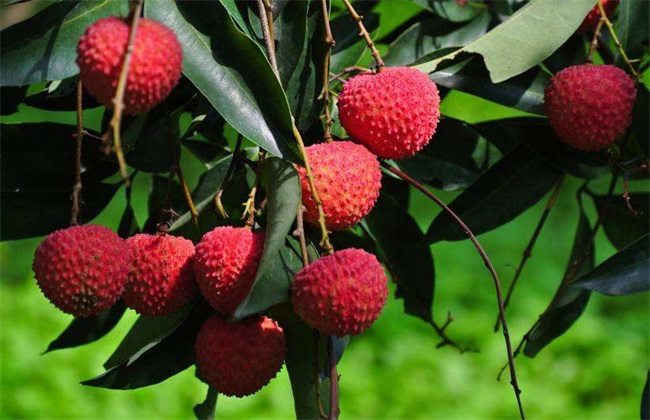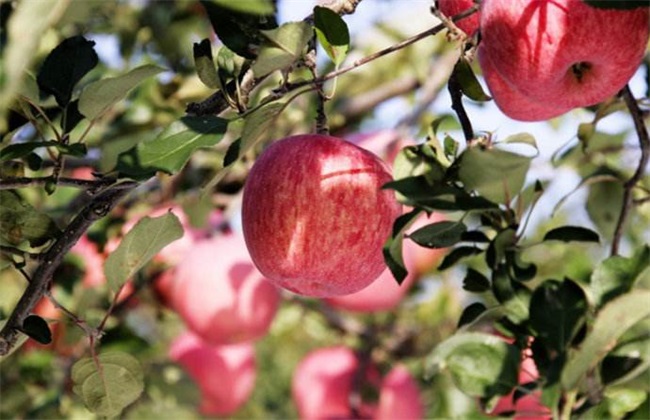Litchi Fertilization Period and Method
Litchi is a fruit that many people like to eat very much, and it is also a kind of fruit that can compete for the market with watermelons in summer. Now the planting area of litchi is very extensive, and the market price is only increasing. So now there are more and more people planting. When planting litchi, fertilization is very important, which is very important to the growth of litchi. So how to fertilize litchi? Let's take a look at it with the editor.

1. Planting in January
Fertilization can be started after litchi seedlings are planted for about one month, and fertilization can be applied in 2-3 years for the purpose of increasing the number of followers and promoting shoot growth. When the shoot top bud began to sprout, an appropriate amount of quick-acting fertilizer was applied to promote the growth of new shoot leaves. When the new shoots stopped growing and the leaves began to turn green, re-fertilization promoted the leaves to turn green and the branches stout. After successfully turning green, topdressing again to promote the maturity of new shoots. Because in the first year after planting, the root growth ability of litchi seedlings is weak, so we should pay attention to control the amount of fertilizer application.
2. Planting for 2 years
After one or two years of planting, strengthening the management of water and fertilizer is the key to ensure the growth of the following group and shoots. After the seedlings survive, because the development of the group is not yet mature, the absorptive capacity is also relatively poor. Therefore, do not fertilize too much, mainly rotten farm manure, combined with nitrogen, phosphorus, potassium and other nitrogen fertilizer, follow the principle of more and less application. A small amount of thin fertilizer and water can be applied every month in the first year. Then in the second year, it is necessary to have a purposeful topdressing, such as increasing the number of roots, promoting green, and so on. The corresponding topdressing work should be done according to the growth stage of litchi to meet the nutritional needs of litchi.
3. Amount of fertilizer applied
The amount of fertilizer applied varies from year to year, and the amount of urea is kept at about 20g in the first year. If it is a compound fertilizer, it can be increased by 10g appropriately. Or add about 220g of phosphorus and potassium fertilizer to the rarefied dung water. The amount of fertilizer applied to each litchi should be controlled at about 2-4 jin. Then, from the beginning of the second year, the amount of fertilizer should be gradually increased, which is about the same as that of the first year. In the first year of fertilization, fertilizer should be mixed with water and carried out by splashing. Then the method of fertilization in the second year can be changed to ditch application, and proper watering should be done after fertilization.
4. Extra-root topdressing
Litchi leaves have a large demand for fertilizer, and the ability of absorption and transformation is also strong. Therefore, we also need appropriate extra-root topdressing when planting litchi. Foliar fertilizer is mainly composed of 0.2% urea and 0.4% phosphorus and potassium fertilizer. Reasonable spraying foliar fertilizer can effectively promote shoot ripening. However, we should pay attention to the concentration, if the concentration is too high, it is easy to cause leaf burns, so it is necessary to appropriately reduce the concentration in the case of high temperature and drought. And because the root capacity of young trees is not strong, it is necessary to pay attention to watering during drought to prevent plants from drying up and dying due to excessive drought.
The above is a brief introduction of the period and methods of fertilization in litchi. The fertilization of litchi is very important, at the same time, we should also pay attention to watering, water and fertilizer work as far as possible to meet the nutritional and water needs of litchi. That's all for today's introduction. This article is for reference only. I hope it can help you all.
Related
- Moge, come on! The staff of the peasant association in the producing area of cantaloupe were frightened when the crowd gathered.
- Causes and Solutions of low Fruit setting rate of Apple
- Symptoms and control measures of passion fruit virus disease
- Fruit growing lesson: how do apple orchards keep high yields?
- Can you build orchards in the mountains? What are the pros and cons?
- How to manage the coloring period of Crisson grape?
- This paper introduces the processing technology of two kinds of fig products.
- How much is a month for retired teachers in rural areas by 2020?
- How can strawberry planting increase sugar content? We should pay attention to management in many aspects.
- What are the cultivation techniques on how to improve the yield of golden fruit?



